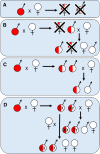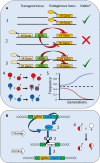Towards the genetic control of invasive species
- PMID: 28620268
- PMCID: PMC5446844
- DOI: 10.1007/s10530-017-1384-6
Towards the genetic control of invasive species
Abstract
Invasive species remain one of the greatest threats to global biodiversity. Their control would be enhanced through the development of more effective and sustainable pest management strategies. Recently, a novel form of genetic pest management (GPM) has been developed in which the mating behaviour of insect pests is exploited to introduce genetically engineered DNA sequences into wild conspecific populations. These 'transgenes' work in one or more ways to reduce the damage caused by a particular pest, for example reducing its density, or its ability to vector disease. Although currently being developed for use against economically important insect pests, these technologies would be highly appropriate for application against invasive species that threaten biodiversity. Importantly, these technologies have begun to advance in scope beyond insects to vertebrates, which include some of the world's worst invasives. Here we review the current state of this rapidly progressing field and, using an established set of eradication criteria, discuss the characteristics which make GPM technologies suitable for application against invasive pests.
Keywords: Biodiversity conservation; Eradication; Genetic control; Genetic pest management; Invasive species; Refractory transgene; Transgenic control.
Conflict of interest statement
LA has equity interest in Intrexon Inc, which is developing genetic pest management methods for several insect species.
Figures


References
Grants and funding
LinkOut - more resources
Full Text Sources
Other Literature Sources
Molecular Biology Databases
